What is CapEx and OpEx
Tuesday, August 16, 2022
Table of Contents
What is CapEx and OpEx?
CapEx refers to a Capital expenditure while OpEx refers to an Operational expenditure. Capital expenditure is incurred when a business acquires assets that could be beneficial beyond the current tax year. For instance, it might buy brand new equipment or buildings. Also, it could upgrade an existing asset to boost its value beyond the current tax year. CapEx is also known as a Capital expense.Operational expenditure consists of those expenses that a business incurs to run smoothly every single day. They are the costs that a business incurs while in the process of turning its inventory into an end product. Hence, depreciation of fixed assets that are used in the production process is considered OpEx expenditure. OpEx is also known as an operating expenditure, revenue expenditure or an operating expense.
Understanding CapEx vs OpEx difference is crucial for any business struggling to optimally utilise finance by making sure that the correct mode is used for capital expenses and other types of expenses. Below you will find a complete guide to Capex vs Opex, explaining the benefits and disadvantages of both, and how to manage them effectively.
How CapEx and OpEx are Treated in Accounting
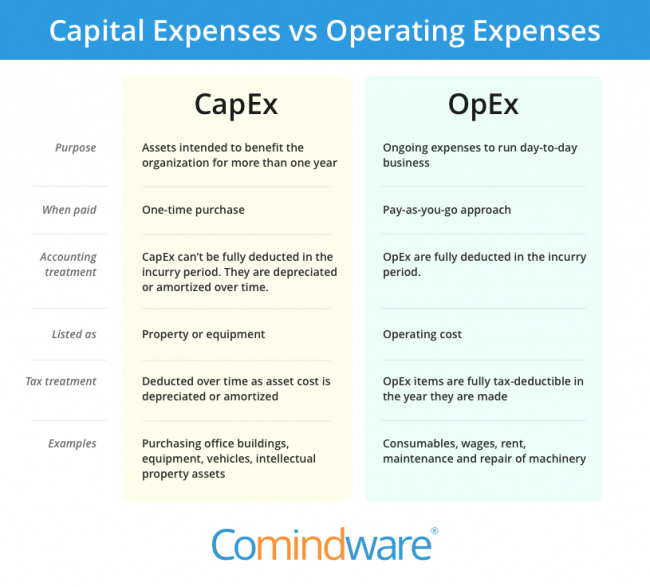
CapEx – Capital expenditures are not fully deducted in the accounting period they were incurred. In other words, they are not fully subtracted from the revenue when computing the profits or losses a business has made. However, intangible assets are amortized over their lifespan while the tangible ones are depreciated over their life cycle. All monies spent to get new inventory, including machinery or intellectual property, are grouped under CapEx spendings.
OpEx – Operating expenses are fully deducted in the accounting period they were incurred. All funds spent when converting inventory into throughput falls under OpEx. This includes employee wages, repair and maintenance of equipment, rental fees, and utility bills and so on. If a business invests in real estate, this spending is approved as CapEx budget and the expense is grouped under CapEx. However, all the costs incurred when managing such an income generating building falls under OpEx.
CapEx Summary
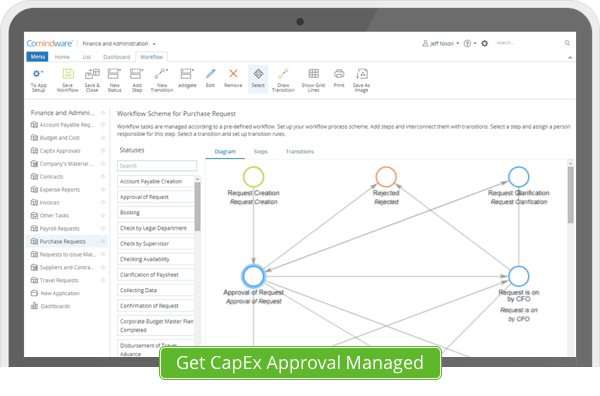
- Purchase of fixed assets.
- Preparation of the purchased asset so it can be appropriate for business use.
- Fixing of asset’s problems,
- Restoration of an asset’s value through upgrading
- Adapting a machine to a different use
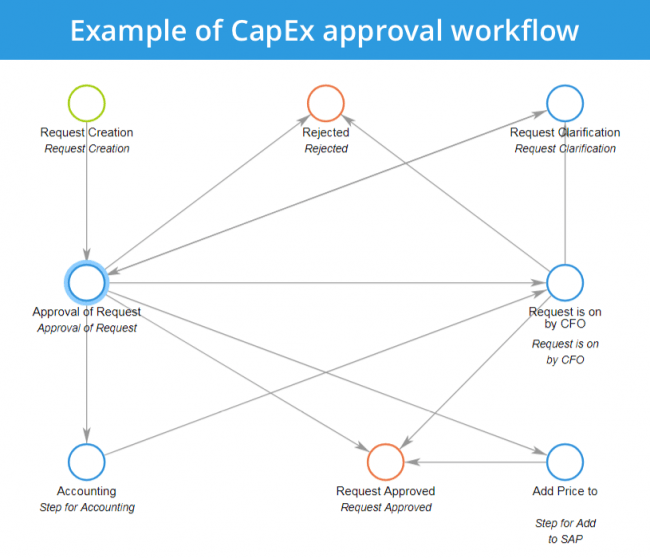
Operating Expenditures Summary
- License fees
- Advertising costs
- Legal and attorney fees
- Telephone and power overheads
- Insurance fees
- Property management costs
- Property taxation expenses
- Vehicle fuel and repair costs
- Leasing commissions
- Salary and wages
- Raw materials and supplies
- Office overheads
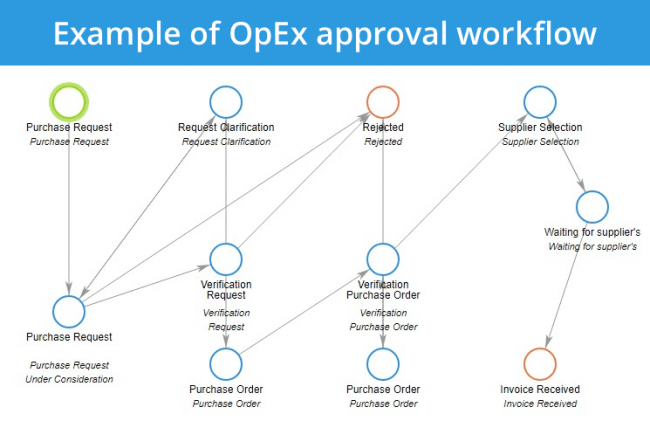
IT Spending – CapEx or OpEx?
Traditionally technology investments most often were considered for capital expenditures over OpEx, because CFOs could take advantage of amortization these expenses over an extended period of time. Nowadays, more and more companies switch IT investment from CapEx to OpEx and they have a reasonable argument for this switch – moving company IT infrastructure to the cloud. Once this moving happens, additional CapEx benefits fall as far as the company no longer needs static investments for the hardware, software and resources. Services and options are purchased as needed, costs are fluctuating and OpEx works better for such expenses type and supports necessary scalability.What Do Most Businesses Choose Between the Two?
Now you can answer this: What is CapEx and OpEx. But which one of the two would you prefer? From the income tax perspective, most entrepreneurs prefer OpEx to CapEx. A case in point is when a business opts to lease rather than buy equipment to be able to deduct its full cash expense for leasing when computing its taxes for that accounting year. The benefit of having the ability to deduct expenses is the fact that it minimizes the income tax that is charged on your net income. Besides, you will only incur an operational cost once you lease the item again.Get our PDF Case Study to learn how Hertz has leveraged CMW Tracker to create a modern CapEx approval application, which replaced complex Excel files and dramatically reduced the capital expenditure approval cycle time, decreased operational expenses and minimized financial risks.
When a Business Can Opt for CapEx

A business that wants to boost its profits and book value can opt to incur a capital expense by purchasing a new machine rather than leasing one. It will have to deduct a small portion of it as an expense in that accounting year. In such a case, the business’ balance sheet would indicate a higher value of assets and net income. It also means that it would save very little on tax.
Capital expenditures entail huge investments in goods that are placed on the balance sheet and are then depreciated over the life of the asset. On the other hand, operating expenditures appear on the profit and loss A/C. They relate to costs incurred on a continuous basis. If you are in an organization that anticipates quick growth or technological changes, OpEx should suit you best. Instead of purchasing a capital good and then getting stuck with it, you will be better of leasing one. Once you pay your leasing fee, there will be no further financial obligation on your part. But if you cannot avoid CapEx, and have no limited access to capital investments (sounds like a CapEx controller dream), you should go for it and make sure that you have a CapEx project management professional on a full-time basis. Now you have the answer to this, what is CapEx and OpEx, and it is upon you to decide which one to go with.
CapEx and OpEx Management in Post-COVID-19 Times
The COVID-19 pandemic caught the world off guard, impacting not only how humans live, work, and communicate but also how they run their businesses and manage capital and operating expenses. But, the worst is over now, bringing in new challenges, opportunities, and post-pandemic transformations in the realm of CaPex and OpEx expense management. So, what are the emerging CapEx and OpEx trends and strategic approaches that organizations across industries are massively embracing? Let’s find out below.
Environmental, social, and governance (ESG) considerations
In the post-pandemic world, ESG considerations are critical factors, impacting operating and capital expense decisions. This indicates that when making financial management choices, businesses focus on addressing sustainability issues, adopting small business social responsibility (SBSR), and adhering to a defined set of company governance rules and practices. Among them are transparency, ethics, accountability, stakeholder engagement, and many others. Prioritizing ESG factors, organizations allocate and utilize their resources more sustainably, boost operational efficiency, and enhance their brand value in the arena of capital projects, establishing a sound reputation among prospective talent and customers.
Digital transformation
The post-pandemic times have accelerated the process of digital transformation (DX), which has become a massive trend for capital expense and operating expense businesses. Focused on the adoption of emerging technologies, such as artificial intelligence (AI), cloud computing, and the Internet of Things (IoT), DX helps streamline a wide range of tasks and get a significant pool of benefits. By embracing digital technologies, CapEx and OpEx businesses migrate to cloud-based IT infrastructure, reduce long-term investments in on-premises hardware and software, minimize relevant maintenance costs, enhance operational efficiency, improve scalability and flexibility, and facilitate decision-making in financial planning.
Hybrid work and remote teams
Another trend in the after-COVID-19 times is the shift toward the hybrid work model or fully remote teams. This means that CapEx and OpEx businesses are heavily adopting a wide array of digital collaboration tools and virtual communication platforms to facilitate remote work and maintain employee productivity, engagement levels, and flexibility. Transitioning to hybrid work and remote teams, businesses ensure prudent cost allocation by cutting overhead office-related costs, all while increasing efficiency levels and achieving their long-term budgeting goals.
Enhanced cybersecurity
As multiple CapEx and OpEx businesses have recently embarked on their DX journey and tapped into the power of hybrid and remote work, ensuring enhanced cybersecurity levels is becoming not merely a trend, but rather an urgent necessity. To guarantee all corporate information is securely and tightly protected against all potential cybersecurity breaches, companies implement a wide range of relevant solutions for network and endpoint security. These solutions include next-gen firewalls (NGFWs), intrusion detection systems (IDSs), intrusion prevention systems (IPSs), and more. By integrating these solutions into OpEx and CapEx processes, businesses guarantee the comprehensive protection of all their systems while ensuring the safety of all corporate assets and maintaining long-term business continuity.
Considerations of regional characteristics and specifics
Both regional characteristics and specifics are becoming a significant CapEx and OpEx trend in the post-pandemic era. This means that local legislative regulations, cultural specifics, and existing economic environments influence how OpEx and CapEx businesses manage their expenditures and fixed assets, including cash flow, tax deduction, asset acquisition and depreciation, amortization, and more. To optimize their financial strategies and ensure efficient cost control during a specific accounting period, businesses need to consider a wide range of regional factors, including the current state of the economy, regulatory compliance pertinent to a particular region, market fluctuations, and more.
Strategic planning and forecasting
Strategic planning and forecasting is another trend related to the field of efficient CaPex and OpEx management. It involves using advanced data analytics and predictive modeling tools that empower companies to strategically plan and efficiently allocate their capital and operating expenditures, including long- and short-term costs, profit and loss statements, and overall balance sheets. Adhering to the strategic planning and forecasting trend, companies align their financial strategies with desired business objectives, ensuring long-term business growth and success.
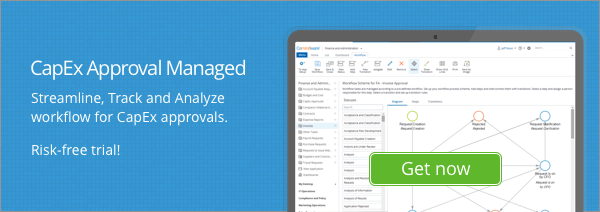


Posted on: in CapEx